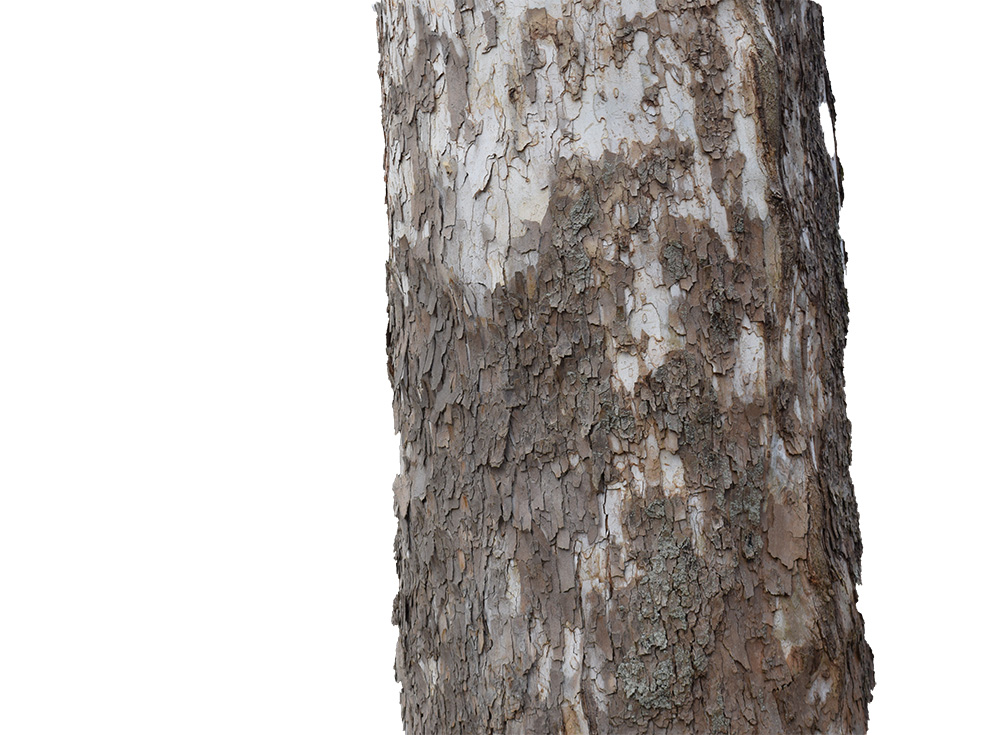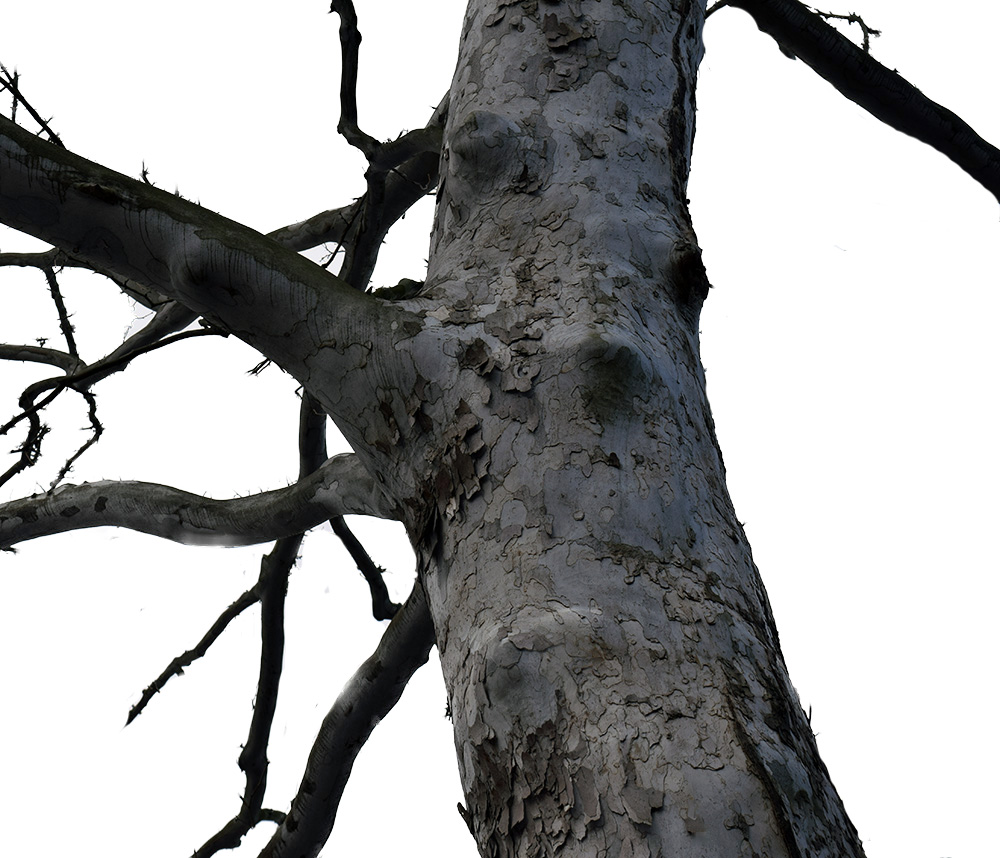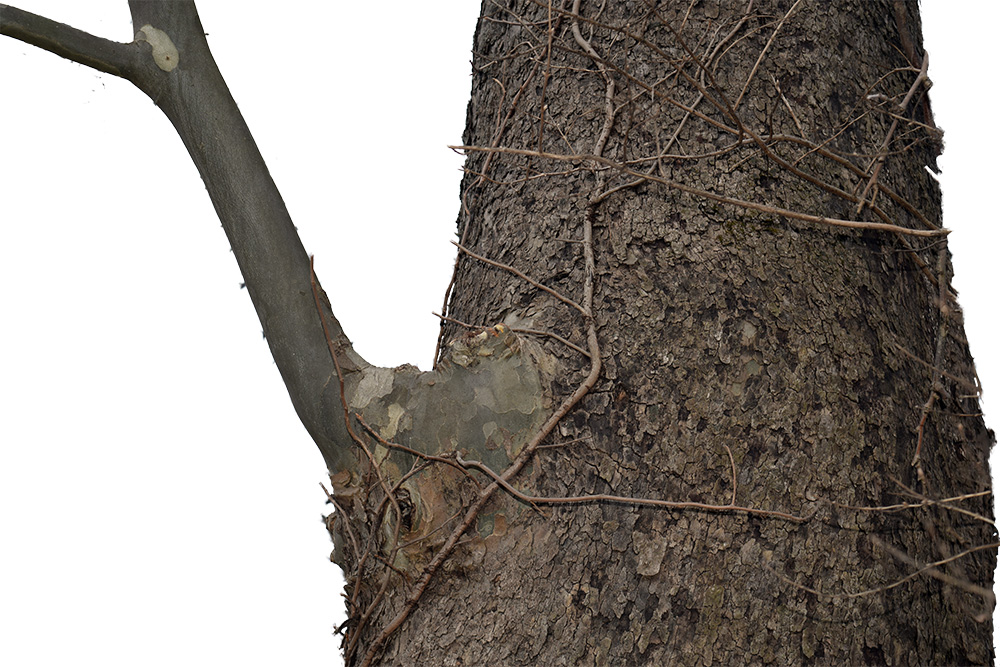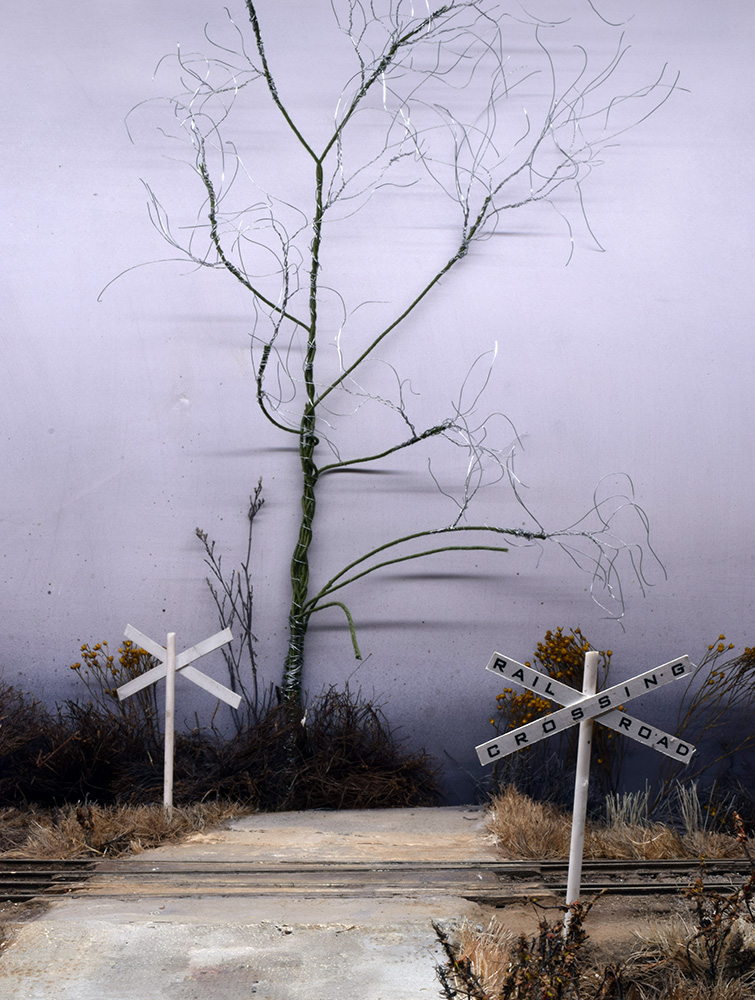Bringing all my experiences to the craft of model building is what I enjoy most. The observation skills I’ve developed from painting are, perhaps more than any other, equally useful in modeling.
My default mode is to dive in feet first and hope for the best. It’s irritating how quickly and easily I fall into this trap. Careful observation doesn’t come naturally, I have to work and focus hard before I can see the subject as it actually is versus how I assume it to be. Crafting this sycamore tree model has been an exercise in learning to see all over again. Evaluating my first wire armature showed a lack of understanding of the subject tree. (See the post from last week.) I decided that more fieldwork was needed and went out with my camera and sketchpad one morning. I shot a number of photos both of the subject tree and other sycamores in the area, capturing the overall shapes and smaller details. I also brought home a small branch I found on the ground to study the bark texture and coloring.

The texture and coloring of sycamore bark is distinctive. Since my model will be a background tree, I’m more focused on the coloring.
I like to immerse myself in a subject and gather more reference material than I will use. I shot details like the bark texture of the main trunk along with the junction of the major branches. Even though this is a background tree, there is a distinctive shape where these limbs meet the trunk that the model needs to include.

Of interest here is the shape of the branches where they meet the main trunk. That flare is a characteristic of this species the model should reflect.

The contrast in bark texture where this young branch comes off the trunk would make a great modeling exercise on a large foreground tree.

Digging out my copy of Gordon Gravetts’ book on deciduous tree modeling, I made this second armature using florist wire. While the overall shape is simplified, I feel this armature is stronger and better captures the essence of the real tree. There is still work to do but I’m happier with this one.
Doing these exercises is enjoyable and there’s no reason to rush them. Giving my full attention and letting curiosity go were it wants adds to the knowledge base I have to work from. It’s a reminder to enjoy the process and let the outcome take care of itself.
Mike
Mike, thanks again for writing about your introspection and reworking, it is both rare and inspirational to read. The tree is looking very promising; I look forward to following your creative thinking on this.
I, too, have issues with observation and also like to dive in before fully absorbing things. One trick I use at times to overcome this is to look at an object through a small hole (1/8″ or so) in a card. It isolates what I’m looking at from all the noise of the surrounding scene, and it also shuts down the “reality” my mind insists it is seeing by showing the true reality of what’s in front of me. Actual detail and color emerge so I can understand plausibly simplify and recreate what I’m seeing.
Mike, I feel like me and you approach the craft in very similar ways. Even with something as(seemingly) simple as a tree. We know that unless you slow down, observe and collect data on the subject it will not measure up to what we strive to achieve. I have read your blog for years and I am always interested in the introspective dialog. I am currently building a weaver RS3 into a model of Batten kills 4116 and I find myself rushing into it without proper research and the resulting errors. Every time I do, I come back here and re-read some of your key posts about why we do this craft. And how the natural tendency of many is to just “jump in” and the less than satisfying results that are bound to follow. So I find myself slowing down, and redoing many things until they are what I picture in my minds eye. Your approach is very similar. And we both have the artistic backgrounds(photography for me) so in summation: as always a very interesting post. I look forward to seeing the growth(pun not intended) of this tree project.
Thanks for the comments guys and I’m sorry for the slow response to them.
Dave, I often squint to reduce the overwhelming detail of an object and have used your card technique as well. Both are effective.
Tim, It’s all in how you approach the work and what you want from it. I’m no longer driven by the urge to have everything. I’m happier with a few high quality models that I can look at with satisfaction and be reminded of the enjoyment I had in building them. In a project like your RS3, you get to determine the standards that make the build worthwhile for you. I suspect that’s where your enjoyment of it comes from. If you’re anything like me, the process is more enjoyable than having the object. (Although, that’s fun too.)
I’ve made good progress on the tree model as you’ll see in the next post.
Mike